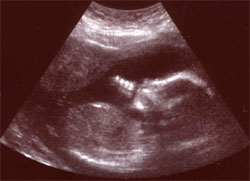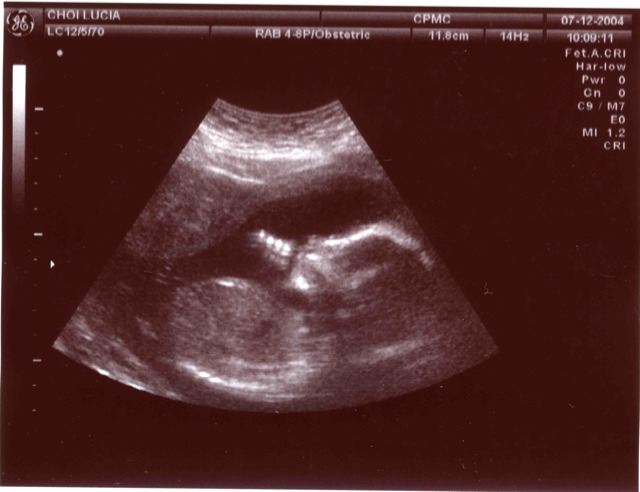One-way Mirror for Sound Waves
A diode allows electric current to flow in only one direction in a wire and is essential in electronics, but no such one-way device exists for sound waves. In the 4 September Physical Review Letters, researchers describe a design that partially fills this role by converting sound to a new frequency and blocking any backwards flow of the original frequency. If the technique is practical, it could give designers new flexibility in making ultrasonic sources like those used in medical imaging.
Usually, waves can travel just as easily in either direction along a given path. So lasers, for example, are sometimes protected from their own reflections by shining them through clear magnetic materials that sidetrack any reflected light. But there is no analogous trick to deflect backtracking sound waves that might disturb the operation of an ultrasound source.
In related work, however, researchers have recently proposed “thermal diodes” [1]–layered structures that let heat flow one way but not the other. Inspired by these results, Jian-chun Cheng and his colleagues at Nanjing University in China designed a device, which they call an acoustic diode, that passes some sound energy in only one direction.
Their proposed structure combines two components. The first is a sheet of “nonlinear” acoustic material–one whose sound speed varies with air pressure. An example of such a material is a collection of grains or beads, which becomes stiffer as it is squeezed, says Vitali Nesterenko of the University of California in San Diego. A sound wave passing through such a nonlinear material creates additional sound waves at other frequencies–including some with twice the original frequency–much as an over-amplified sound system adds extra noise to the music. Cheng and colleagues calculated the effect of putting this doubling material face to face with a second component: a filter that allows the doubled frequency to pass through but reflects the original.
If the sound comes from the right, it hits the nonlinear material first, creating doubled-frequency sound that passes through the filter. But any sound coming from the left at the original frequency is blocked before it reaches the doubling layer. Choosing a set of specific material parameters, the researchers calculate that about 100,000 times less energy can pass left-to-right than right-to-left.
This acoustic diode differs from its counterpart used in electronic circuits because it only works for sound waves in a narrow range of frequencies. In addition, the transmitted sound has twice the frequency, so it can pass back through the filter, even though the original frequency can’t. Nonetheless, Cheng is hopeful that the device may be useful in “a variety of significant situations where the acoustic waves need to be specially controlled or modified,” such as the use of focused ultrasound to break up kidney stones.
Nesterenko says that the numbers used in the paper may not be representative of real materials, and “a lot of work remains to be done, especially experimentally.” But he still thinks the structure is innovative and opens new design possibilities. Nicholas Fang of the University of Illinois in Urbana-Champaign finds the “almost completely one-way transmission” to be impressive.
–Don Monroe
Don Monroe is a freelance science writer in Murray Hill, New Jersey.
References
- Focus story on a proposal for a thermal diode from 2002; further work in B. Li, L. Wang, and G. Casati, “Thermal Diode: Rectification of Heat Flux,” Phys. Rev. Lett. 93, 184301





